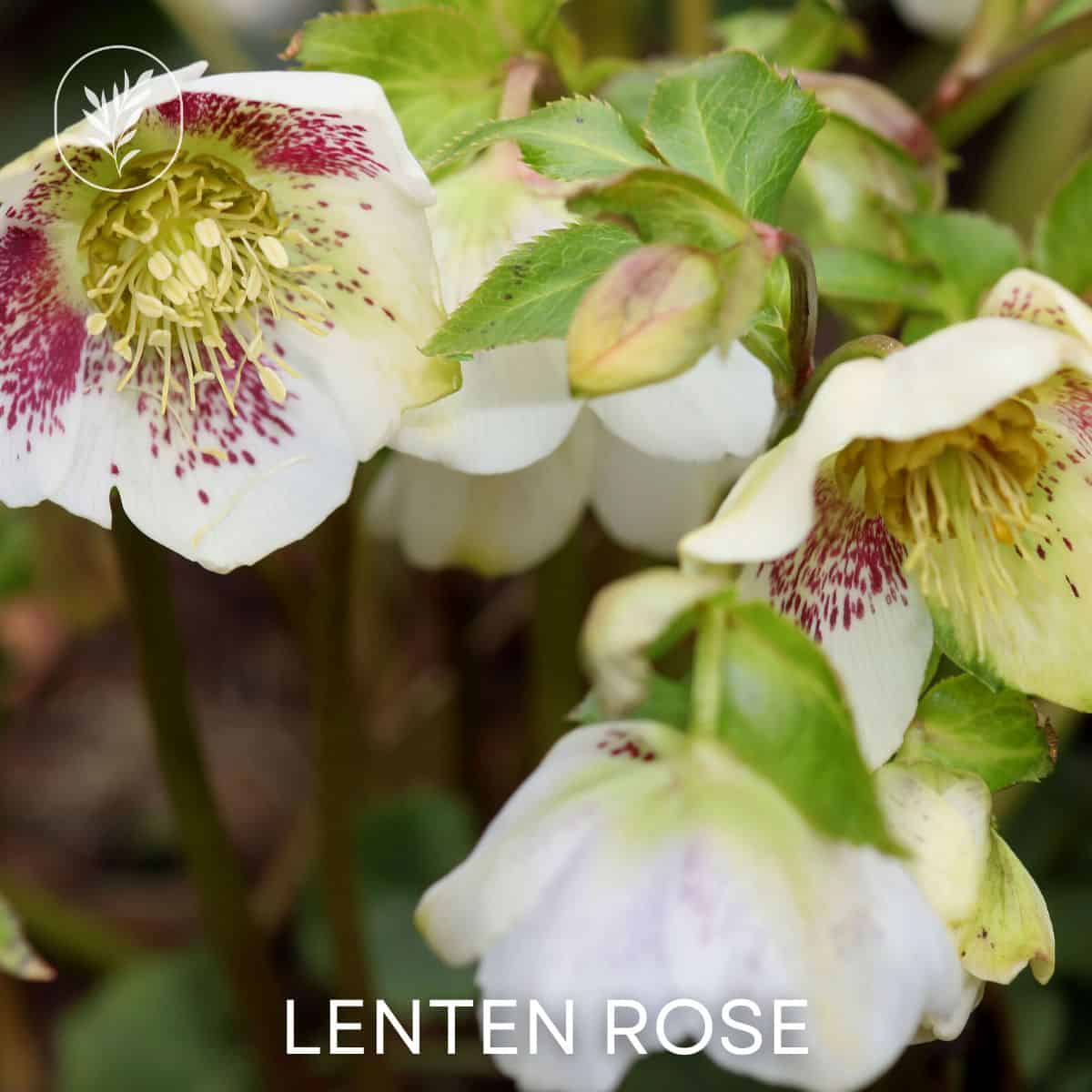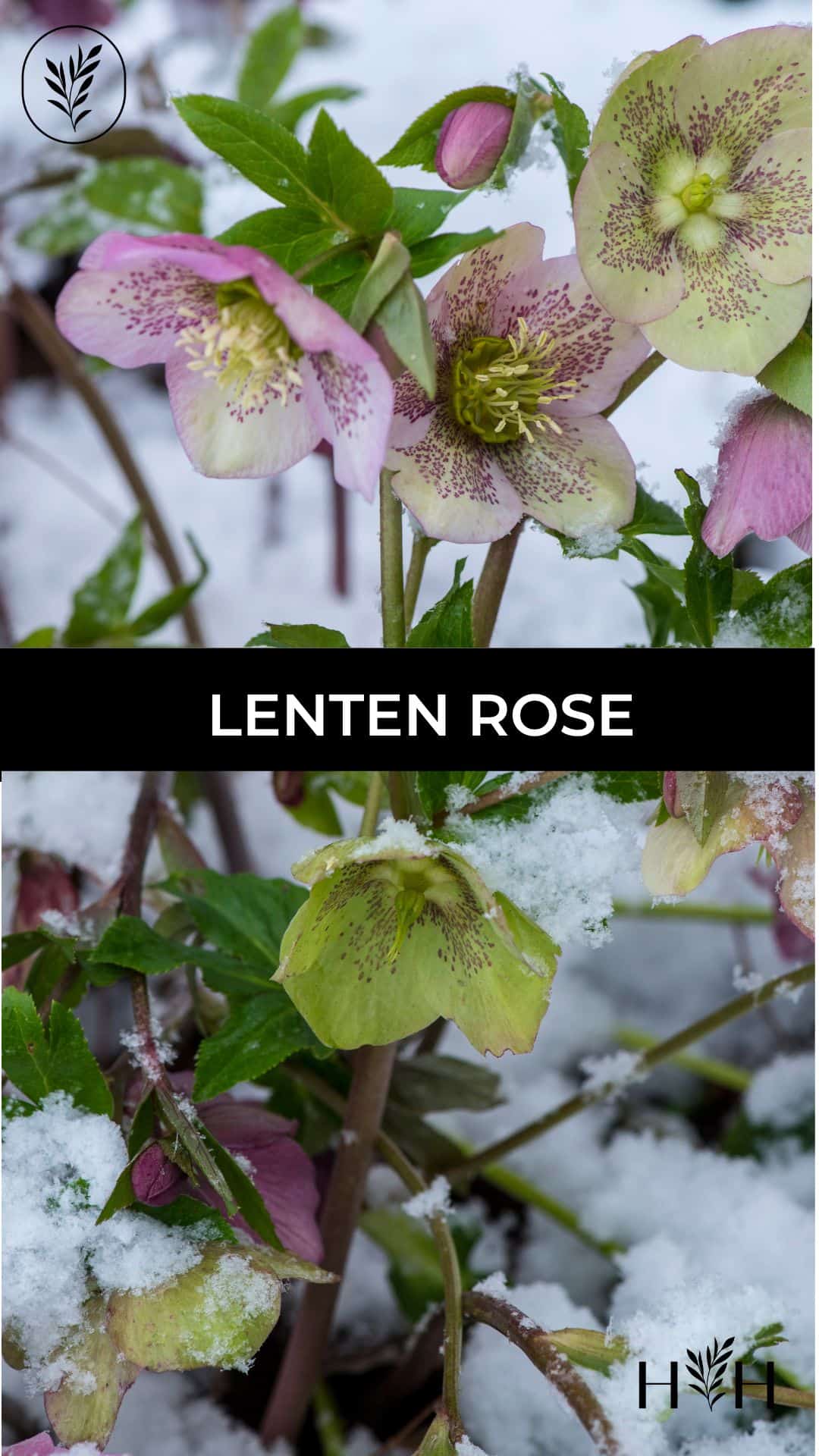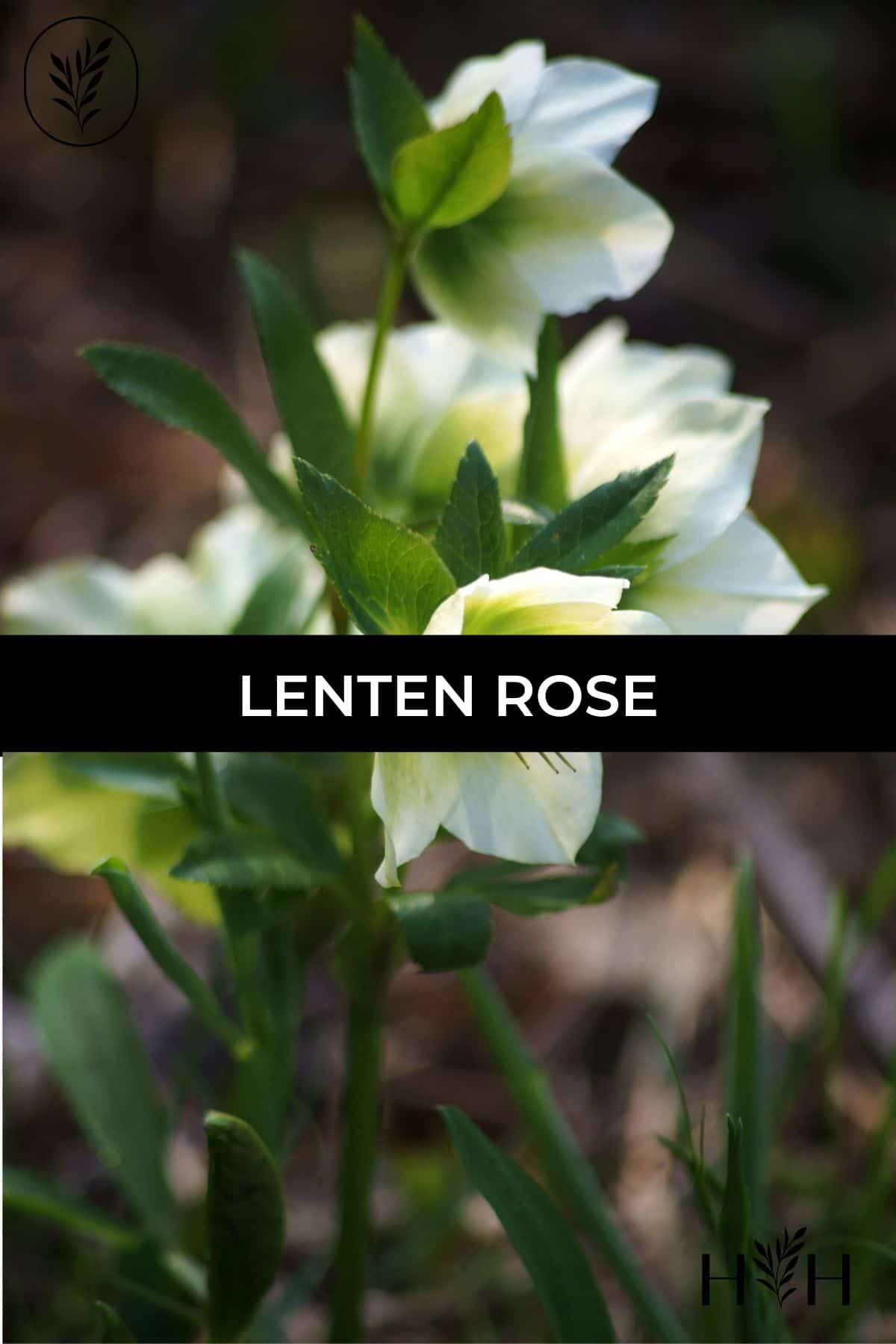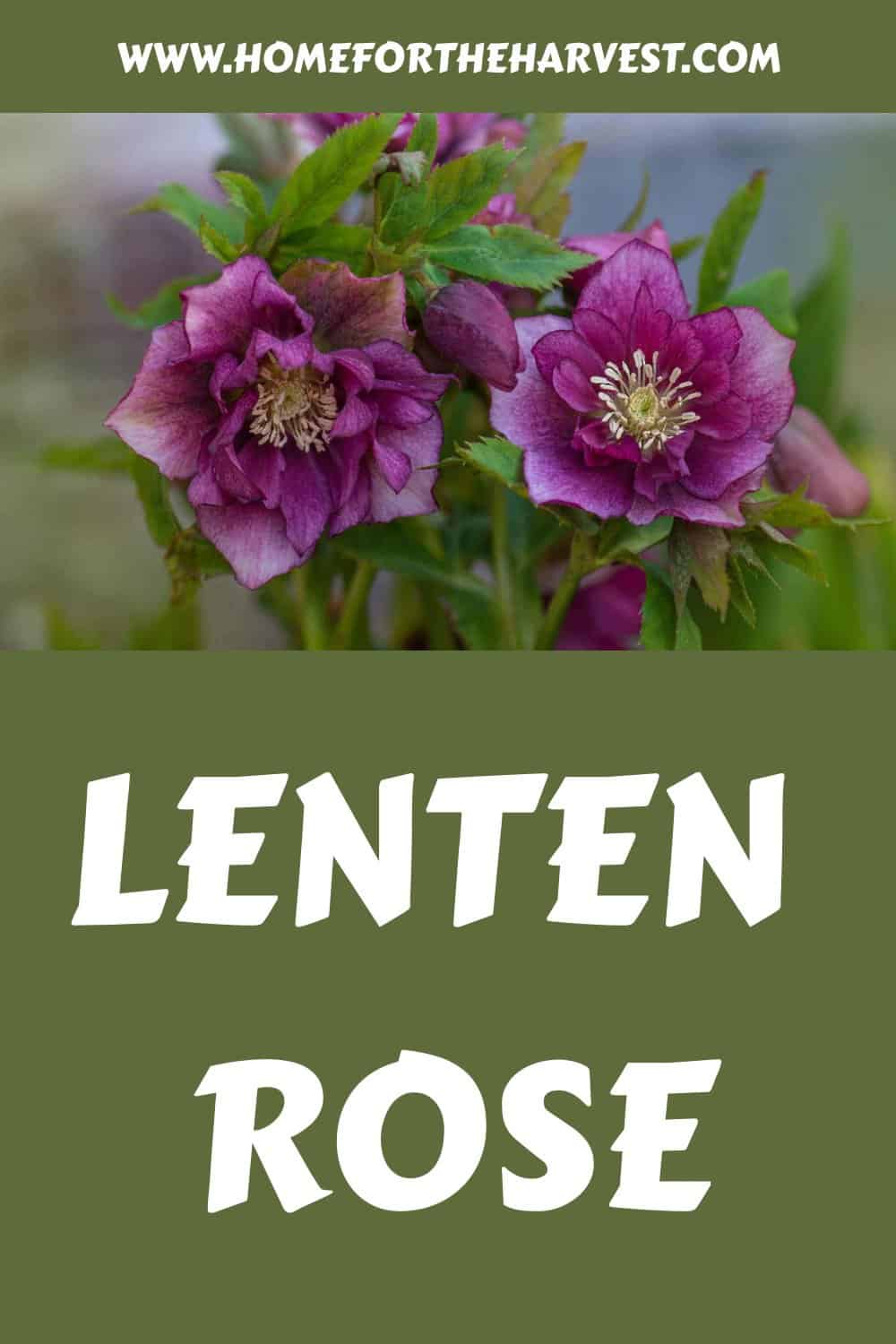There are few species of flowers that thrive in the winter months. Lenten Rose is the rare (and stunning) exception to the rule.
The Lenten rose, also known as a the hellebore flower, is a flowering perennial plant that blooms in the winter between February and April around the time of Lent. The blooms are rose-like in appearance, and available in different shades from purple to white and even green. Lenten Rose plants are beautiful perennials that are best cared for outdoors and they will bring life to your garden in the bleak late winter.
We will explain how to care for this flower from a tiny seed through the winter that it blooms in. There is so much to learn about the Lenten rose, so keep reading to fully understand this flower’s meaning and history.
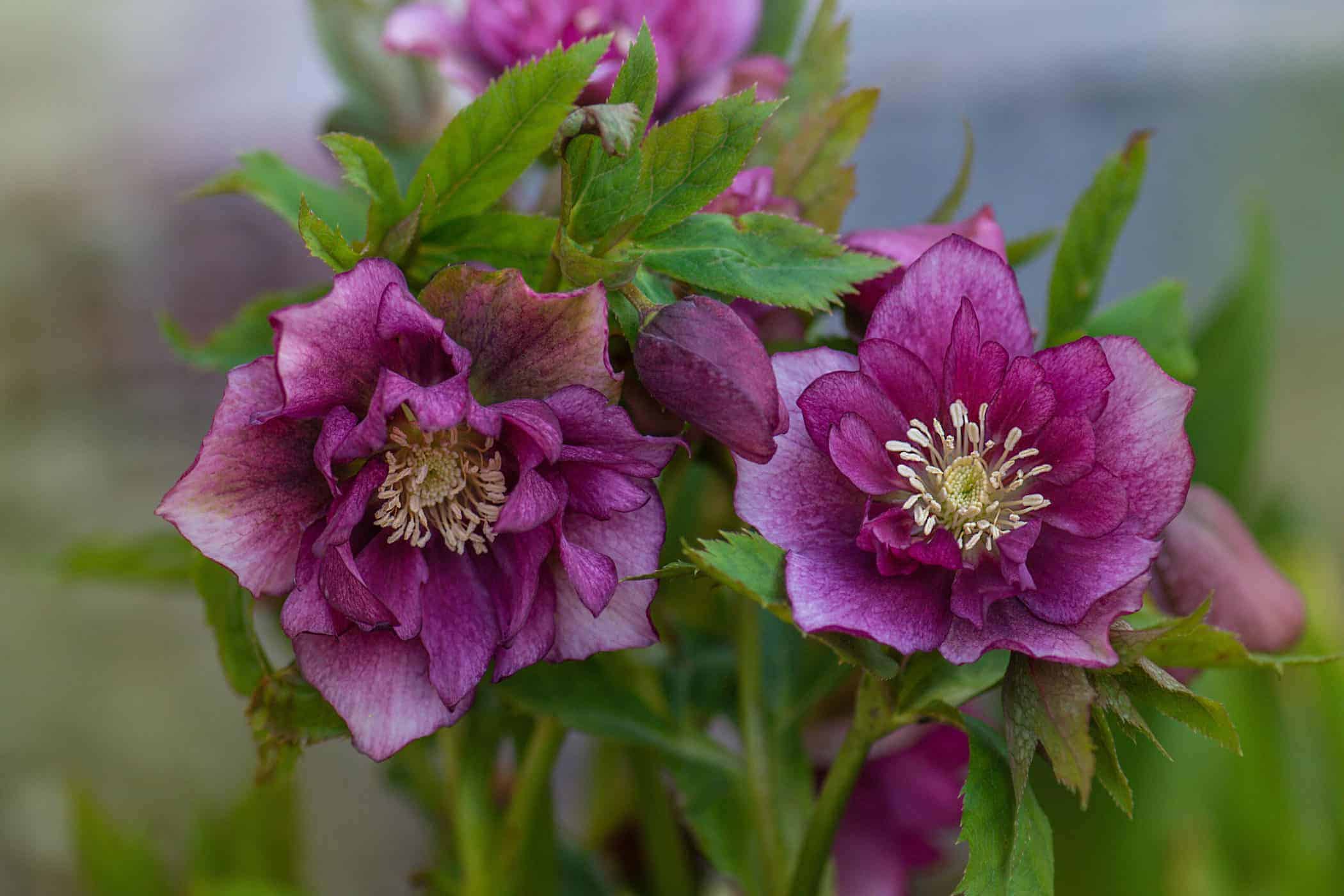
Lenten rose plant basics
Lenten Rose is a perennial flowering plant with thick evergreen leaves and small dignified flowers. This perennial blooms around the time of Lent, with flowers that resemble roses. The name “Lenten Rose” generally applies to hybrid cultivars of hellebore flowers (Helleborus x hybridus), and also sometimes to Helleborus orientalis cultivars.
The Lenten Rose, despite being called a rose, actually belongs to the buttercup family as part of the species known as hellebores. It is only called a “rose” because the flower buds have a rose-like appearance. The flower of this plant has five petals around a ring of small pods shaped like cups.
This flower is interesting because while most flowers drop their sepals early on, the Lenten rose holds onto its sepals until early spring, right before they finish blooming. The evergreen foliage of the plant provides a beautiful background for the red, green, yellow, pink, purple, blue, lavender, or white petals of the blossoms that hang in clusters from the plant.
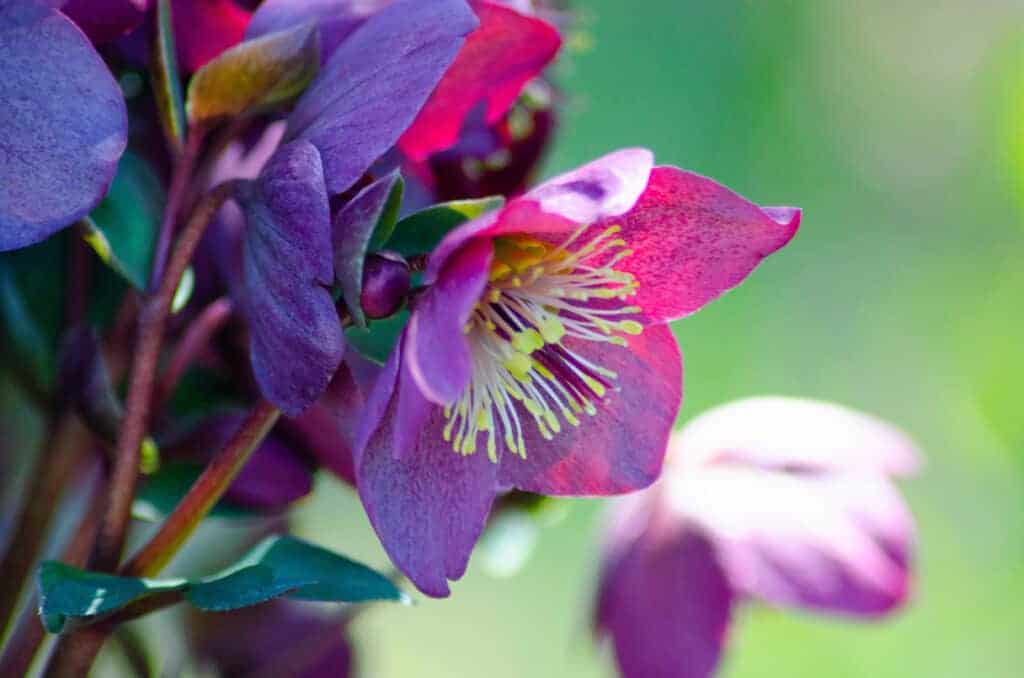
How to plant Lenten roses in the garden
Now that you know the basics of the plant you are going to be adding to your garden, it is important to know how to properly plant it. When planting any plant, flowering or not, it is crucial to plant it correctly as this will set it up for success. If it doesn’t get a good start in life it won’t thrive, no matter how much extra work you do. Luckily, Lenten roses and many other hellebores are very easy to take care of and are easy to grow.
When first introducing a Lenten rose into your garden, you will most likely purchase it as a nursery seedling that will flower within the first year. However, if planting it as a seed, it will take two or three years before the blossoms are present.
Either way, you choose to go about planting this plant, you will need to make sure it is planted in well-draining soil. The plant is very good at tolerating drier conditions, but not very good at dealing with super wet conditions. Once they are established in your garden, they will have no problem if the soil is a little dry, but they will struggle if it is wet.
Because they thrive in dry, well-draining soil, they will also do well with plenty of shade. They can handle the sun well, but they do much better with partial or mostly shady spots. Pick a place in your garden where the Lenten rose will not have to struggle with too much sun. This makes it easier to display them on a porch or front garden as they will thrive even in shady areas.
The best time to plant is late spring or early fall. These times of year are not too cold that the plant will be scorched and beaten down by winter storms, and they will not burn up in the heat while taking root. When planted in early fall, they will grow the best roots they can grow, even if late spring is also a good option. Make sure to plant each Lenten rose plant at least 18 inches apart.
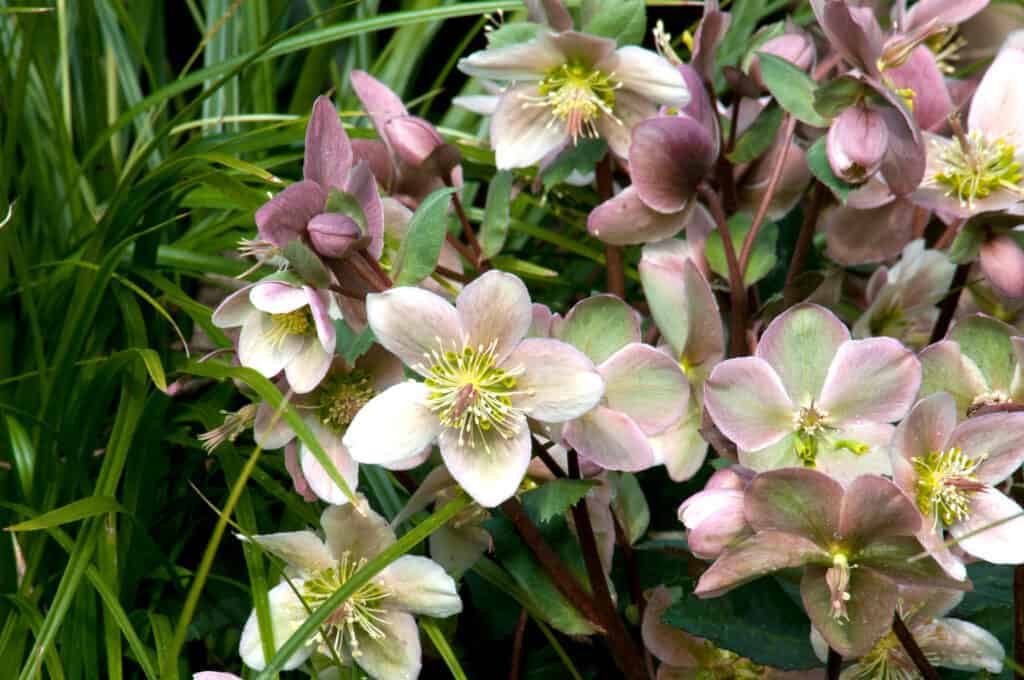
How to care for Lenten rose plants
Now that you have planted your Lenten rose plant in your garden or a large pot on the porch, you can begin to care for it through the seasons. As mentioned above, this plant is very easy to take care of, but that does not mean that it can be neglected for periods of time. To get the best blossoms in the winter, it needs to be healthy all year long.
Early on
While it is not necessary, a little fertilizer right after planting can be very helpful when getting your plant to thrive. It will give the Lenten rose that extra boost of nutrients to grow and flower beautifully. Another helpful tip is to make sure to cover the plant if there are going to be harsh winter storms or extremely cold temperatures soon. Though it is a winter plant, it is still vulnerable to being frozen and damaged.
Besides these tips, there is not much else to do early in the season to help the plant grow. It can pretty much take care of itself. Make sure to water it when the soil looks dry but make sure that it does not stay wet all the time. It needs drier soil to prevent disease and rot on the roots. If it is not drying for some reason, consider adding a little sand to the soil to assist with that.
End of the season
The end of the season is when the most work needs to be done to keep this plant thriving so it can bloom next season. While there are a variety of different tasks to do at the end of the season, it is still a very easy plant to care for.
One of the most important measures to take at this time is to prune the Lenten rose plant. You will know it needs to be pruned when the flowers have begun to brown at the tips. Cut the flowers down to the base of the plant and let the green foliage stay until parts of it brown as well. Then, cut the brown parts of the foliage down to the base of the plant to keep it healthy and fresh.
An important thing to keep an eye on all season is the invasion of pests on the Lenten rose plant. Aphids are the most common pest on these plants, so watch for them. If there is evidence of Aphids, spray the plant with a mixture of soap and water. Re-apply every few days. Luckily, deer are not usually a threat to these flowers because the Lenten rose plant is a deer-resistant plant.
History of the Lenten rose plant
While it is such a beautiful, flowering plant, the Lenten rose plant has a long history where it is not always painted in the best light. It has a rich history that also gives it its symbolism, especially about the hellebore species, which the Lenten Rose is a member of.
While the Lenten rose plant and many other hellebores are a symbol of hope as they signal that spring is near and winter is ending, their history does not reflect this symbolism. In fact, it’s quite the opposite in most cases. A long long time ago, hellebore plants were used as medicine to cure ailments like paralysis and insanity. However, it actually caused many more negative symptoms like vertigo, swelling of the tongue and throat, slowing of the heart, and even death. It is poisonous to people!
Because of its poisonous qualities, it is known to have been used in many instances in Greek history and mythology where it is used for its deadly properties. In one instance, the Greeks poisoned the water supply of the city of Kirrha before laying siege to the city. They did this by adding crushed hellebore leaves to it. When the people drank the water, they all fell ill and could not defend the city very well, so the Greeks were successful.
In another story, Alexander the Great was assassinated with a twelve-day overdose of hellebore. His royal cupbearer went behind his back and added hellebore to his medication every day for twelve days. The hellebore was smuggled in by another person who wished to kill Alexander.
In a less sinister example, there are stories of Hippocrates using hellebore in very limited amounts as a laxative. While he probably used a different, less toxic plant within the species, he still found a way to use it to his advantage. Another more positive story is in a Greek myth, where the daughters of King Midas are cured of insanity by drinking a concoction of hellebore.
While the hellebore species and the Lenten rose plant have a much more negative history than one would expect, it is this history that gives it great significance and a unique backstory that not all plants have.
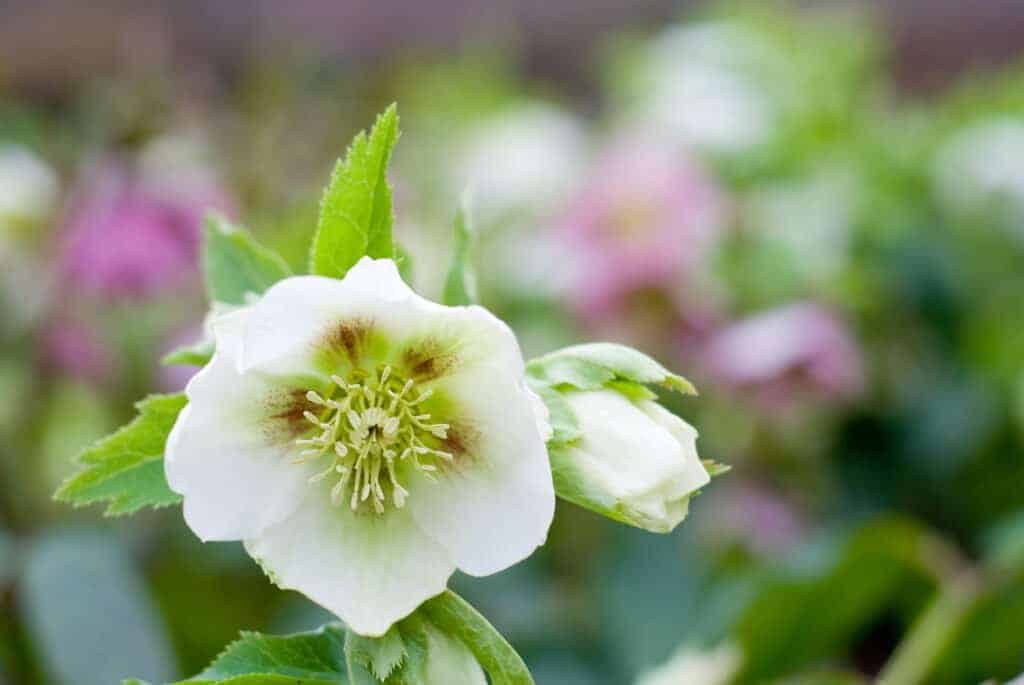
Questions about Lenten rose
While the Lenten rose is a pretty straightforward plant when it comes to planting and care, there are still some frequently asked questions that need answering to really know everything there is to know about the Lenten rose plant. We will go over some of those pressing questions and answer them.
Even though they do well in the shade, how much sun is ideal for a Lenten rose plant?
We discussed how Lenten rose plants thrive in shadier spots, and this is still true, but that does not at all mean that they can not have some sun or do not want some sun. The Lenten rose plant will thrive in partial to full sun in addition to mostly or fully shaded areas. They are plants and they do need some sun every once in a while, but not all the time. This is part of what makes them such great plants because as long as the soil is good, they can be grown anywhere.
Is the Lenten rose plant invasive?
While it should not be a problem if you make a point to properly prune and dispose of the browning flowers, the Lenten rose plant is known for being particularly seedy. Its flowers are not technically flowers, they are sepals. Sepals are what help the plant reproduce better, and the Lenten rose plant is full of them and can drop a lot of seeds throughout the season. To control this, you should make sure to avoid planting it near a river and to give it plenty of shelter from the wind so that the seeds are not able to spread very far.
How do Lenten rose plants fare in the summer?
The Lenten rose plant, while it flowers and blooms in late winter, the sepals, or “flowers” will last for up to six months. The only difference you will see between winter and summer is that the flowers fade more in the summer. While the colors of the petals will be bright and vibrant for those few months in the winter, they will gradually fade as the summer goes on. The end of their season is marked by the tips of the petals turning brown. That is when, as mentioned before, you should prune the flowering branches down to the base of the plant.
Are Lenten rose plants toxic?
Lenten rose plants are toxic to people, dogs, cats, and horses.


